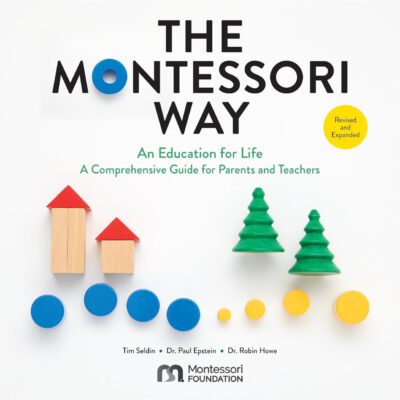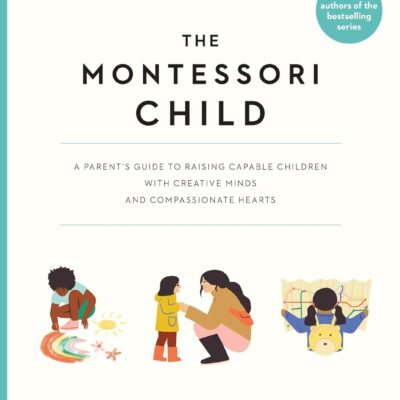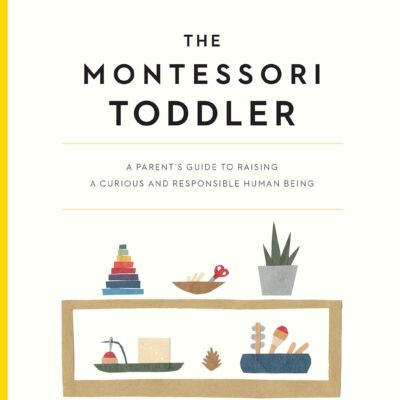
When your child is enrolled in a Montessori program, their learning doesn’t begin and end at the classroom door. One of the most wonderful aspects of the Montessori approach is that its principles can be seamlessly extended into your home — enhancing your child’s independence, curiosity, and capacity for growth in everyday life.
Parents often ask us, “How can I support my child’s Montessori education at home?” The good news is that you don’t need to replicate the classroom or buy expensive materials to foster a Montessori mindset at home. Instead, you can adapt your environment, interactions, and routines to reflect the same respect for your child’s development that we practice at school.
In this article, we’ll explore how you can integrate Montessori principles into your home life — from creating a prepared environment to adopting communication strategies and offering activities that align with your child’s developmental needs.
What Does It Mean to “Bring Montessori Home”?
At its core, Montessori at home means:
-
Creating a child-friendly environment where your child can be independent.
-
Fostering responsibility and participation in daily tasks.
-
Encouraging curiosity and exploration with meaningful, real-world experiences.
-
Respecting your child’s developmental stages and pacing.
You don’t need a fully stocked Montessori classroom at home — rather, it’s about adopting a philosophy of respect, patience, and empowerment in how you structure your home and interact with your child.
Step 1: Preparing the Home Environment
A prepared environment is foundational in Montessori — it allows the child to move, explore, and learn independently.
Make Your Home Accessible
-
Entryway: Install low hooks for coats and bags. Place a basket for shoes where your child can reach them.
-
Kitchen: Dedicate a lower shelf or cabinet for child-accessible snacks, plates, and utensils. Include a small pitcher for pouring water.
-
Bathroom: Provide a step stool for reaching the sink, and store child-friendly toiletries (toothbrush, hairbrush) within reach.
-
Bedroom: Use low shelves for books and toys. Encourage your child to participate in dressing by arranging clothes within easy reach.
Simplify and Organize
Children concentrate better when they are not overwhelmed by clutter. Keep materials organized in baskets or trays, limiting options to 6-8 choices at a time. Rotate toys periodically to maintain interest.
Resource Recommendation:
Montessori Services offers practical tools for home, including child-sized brooms, mops, and kitchen tools.
Step 2: Involve Your Child in Practical Life
Everyday tasks offer valuable learning opportunities. Invite your child to participate in:
-
Meal preparation: Washing vegetables, stirring batter, spreading butter.
-
Setting the table: Count utensils, place napkins.
-
Cleaning: Wiping spills, dusting, sweeping.
-
Laundry: Sorting by color, matching socks, folding small items.
These activities build fine motor skills, sequencing, concentration, and independence.
Pro Tip: Invest in a Learning Tower or kitchen helper stool (brands like Guidecraft or Little Partners) so your child can safely reach countertops.
Step 3: Foster Independence
Let your child do what they are capable of — even if it’s not done perfectly.
-
Encourage them to dress themselves.
-
Let them serve their own water or snack.
-
Teach them how to zip a jacket or button a shirt.
Mistakes are part of learning. Be patient, and resist the urge to step in too quickly.
Step 4: Provide Hands-On, Real Experiences
Montessori values real tools and experiences over pretend versions. Instead of a plastic toy kitchen, invite your child to use real (child-sized) tools to prepare food. Instead of fake gardening kits, let them plant real seeds and care for a garden.
This approach fosters authentic learning and skill development.
Suggested Activities:
-
Gardening: Digging, planting, watering.
-
Cooking: Measuring, mixing, serving.
-
Nature walks: Observing animals, collecting leaves or stones.
-
Art: Drawing, painting, clay modeling.
Books to Inspire:
-
“The Garden, the Curtain, and the Cross” for faith-based families looking to integrate gardening and storytelling.
-
“The Little Gardener” by Emily Hughes — a beautifully illustrated book to encourage a love of nature.
Step 5: Cultivate Concentration
Allow your child uninterrupted time to play, explore, or work. Avoid overscheduling and minimize background distractions like TV or tablets during playtime.
If your child is engaged in building, drawing, or reading, avoid interrupting. This respect for concentration fosters deeper focus and patience.
Step 6: Use Montessori Communication Strategies
How we speak to children shapes their sense of self. Montessori encourages:
-
Respectful language: Speak politely and at eye level.
-
Offering choices: “Would you like to wear the blue shirt or the red one?”
-
Descriptive feedback: Instead of “Good job,” say “You carried your glass so carefully!”
-
Active listening: Validate feelings, even when setting limits. “I see you’re upset because you wanted more time to play. Let’s talk about it together.”
Parenting Resource:
“How to Talk So Little Kids Will Listen” by Joanna Faber & Julie King offers practical communication tools aligned with Montessori respect-based principles.
Step 7: Encourage Responsibility and Contribution
Children want to feel needed and useful. Assign age-appropriate responsibilities:
-
Watering plants
-
Feeding pets
-
Tidying play areas
-
Carrying groceries (small bags)
These tasks build a sense of belonging and competence.
Step 8: Set Up a Reading Corner
Create a cozy, accessible reading space with a small chair, soft lighting, and a basket of books. Rotate the books periodically.
Recommended Books for Montessori Homes:
-
“The Very Hungry Caterpillar” by Eric Carle — teaches sequencing and counting.
-
“The Snowy Day” by Ezra Jack Keats — beautiful storytelling about the wonders of a simple day.
-
“What’s Inside?” by Jeanne Ashbé — encourages curiosity about everyday objects.
Step 9: Model Grace and Courtesy
Social skills are a core part of Montessori. Model:
-
Saying “please” and “thank you.”
-
Greeting others warmly.
-
Apologizing sincerely when appropriate.
Role-play these interactions with your child to practice.
Step 10: Observe Without Interfering
Observation is a critical Montessori tool. Watch how your child uses their environment:
-
What activities do they repeat?
-
Are they drawn to movement, language, or hands-on tasks?
-
What frustrates them?
Use your observations to adjust the home environment or introduce new challenges.
Reflection for Parents
-
Is my home environment supporting my child’s independence?
-
Am I giving my child enough time for uninterrupted exploration?
-
How can I incorporate more real-life experiences into our daily life?
Recommended Resources for Deeper Learning
-
“The Montessori Toddler” by Simone Davies — a comprehensive, parent-friendly guide.
-
“Montessori from the Start” by Paula Polk Lillard — focuses on birth to age 3 but applicable beyond.
-
Montessori Services: Practical tools and materials for home use.
Montessori isn’t just an education system — it’s a way of life. By bringing Montessori principles into your home, you reinforce your child’s growth in confidence, curiosity, independence, and respect.
Start small: choose one or two areas to adapt this month, whether it’s creating a child-friendly kitchen space or building a morning routine with choice and autonomy. The changes you make will send a powerful message to your child:
“You are capable. You are respected. And your contributions matter.”
If you’d like personalized suggestions for creating a Montessori-friendly home tailored to your child’s current interests and age, please don’t hesitate to reach out to your child’s guide. We’re always here to help support your parenting journey.








